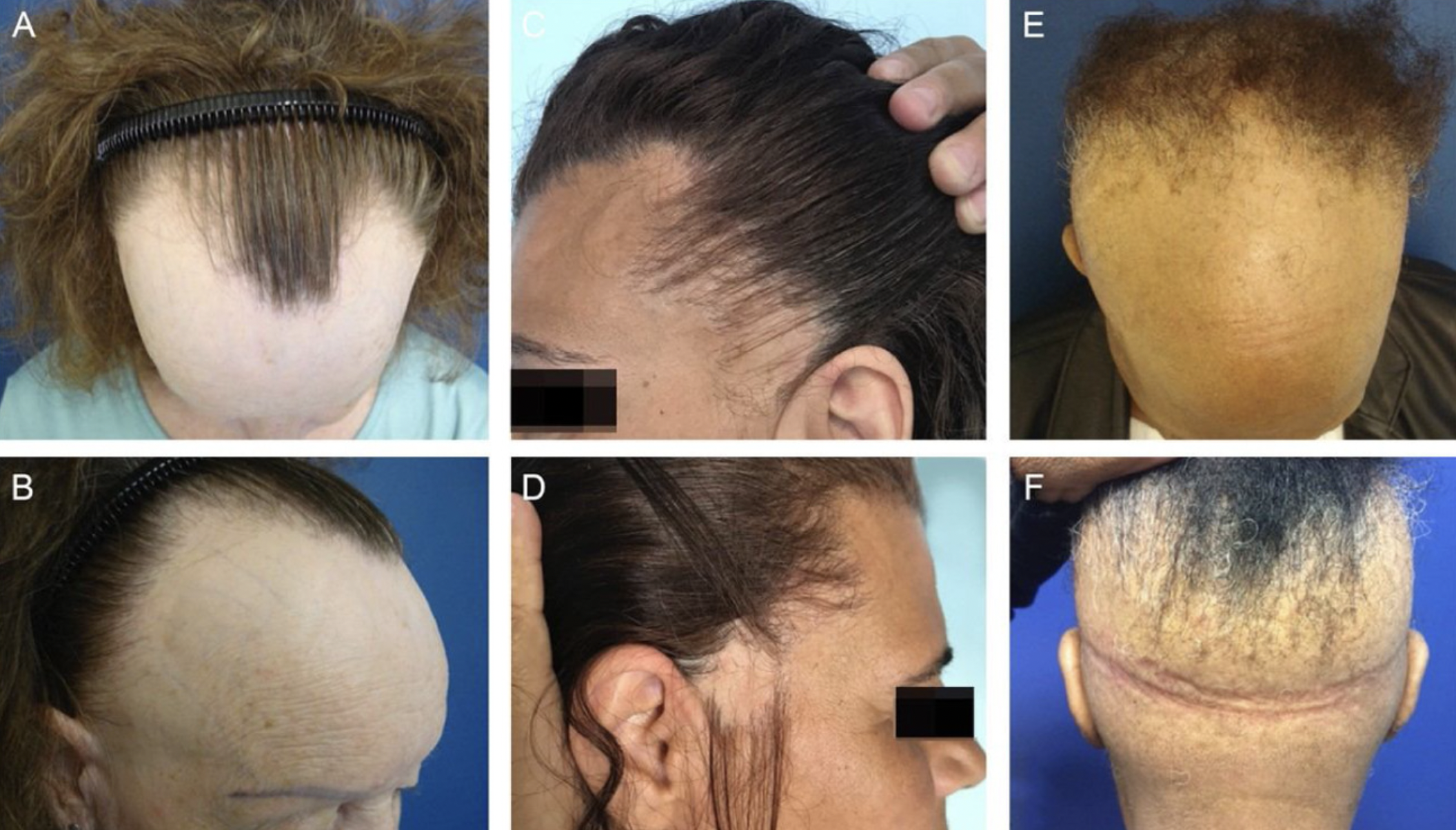The Prognosis of Atypical Patterns of Frontal Fibrosing Alopecia: Ophiasic, Plaque and Male Pattern
Ophiasic Pattern of FFA May be Associated with Poorer Prognosis and More Rapid Progression.
Frontal fibrosing alopecia is a scarring alopecia that often affects the frontal hairline. A variety of typical and atypical forms are known to exist.
Authors of a new study sought to evaluate the prognosis and associations with three patterns: a) male pattern of FFA b) plaque pattern of FFA and c) ophiasic pattern of FFA.
The authors performed a retrospective review of 97 patients with FFA seen from 2011 to 2019. 27 patients (27.8%) patients were identified with atypical patterns of FFA. 12 (12.4%) had a male pattern of FFA, seven (7.2%) with the plaque pattern of FFA, and eight (8.2%) with the ophiasic pattern of FFA.
Three atypical patterns of frontal fibrosing alopecia evaluated by the authors. The ophiasic pattern (far right) was found to have the worse prognosis of the three aytpical patterns studied. SOURCE Rocha VB et al. Uncommon subtypes of frontal fibrosing alopecia: retrospective analysis of clinical characteristics and prognosis. Anais Brasileiros de Dermatologia An Bras Dermatol . Mar-Apr 2022;97(2):260-262. Image shown with creative commons license.
Of 26 patients with an atypical pattern, mean disease duration was 6.9 years. 6 patients had facial papules (4 with male pattern of FFA and 2 with ophiasic pattern). Six patients had lichen planus pigmenotsus (3 with male pattern and 3 with ophasic pattern of FFA).
Interestingly, the authors showed the ophiasic pattern showed the most rapid progression. Hairline at the back advanced at a rate of 2.25 centimeters per year. The male pattern advanced at only 1.02 cm per year and the plaque pattern at 0.67 cm per year. There was no statistical difference between the male and plaque pattern speed of progression.
Patients with the plaque pattern did not show loss of eyebrows. This was in contract to the male pattern and ophiasic patterns which had about 90 % of patients with loss of eyebrows.
Conclusion and Summary
This is a very small study with just a small number of patients in each of the three aytpical groups. nevertheless it has some important findings.
It appears that the plaque form (headdress form), seems to have the best prognosis of the three forms and slowest progression. Patients with the plaque form did not have facial papules, and did not have lichen planus pigmentosus and did not have eyebrow loss.
In contrast, the ophiasic form seemed to have the worse prognosis and the prognosis of the male pattern was somewhere in between. Both types of FFA showed the presence of facial papules, lichen planus pigmentosus and eyebrow alopecia and more rapid hair loss progression than the plaque form.
REFERENCE
Rocha VB et al. Uncommon subtypes of frontal fibrosing alopecia: retrospective analysis of clinical characteristics and prognosis. Anais Brasileiros de Dermatologia An Bras Dermatol . Mar-Apr 2022;97(2):260-262.
L.A. Contin et al. Patchy Frontal Fibrosing Alopecia: Description of an Incomplete Clinical Presentation. Skin Appendage Disord, 3 (2017), pp. 190-192
A. Rossi, et al. Unusual patterns of presentation of frontal fibrosing alopecia: A clinical and trichoscopic analysis of 98 patientsJ Am Acad Dermatol, 77 (2017), pp. 172-174
This article was written by Dr. Jeff Donovan, a Canadian and US board certified dermatologist specializing exclusively in hair loss.

